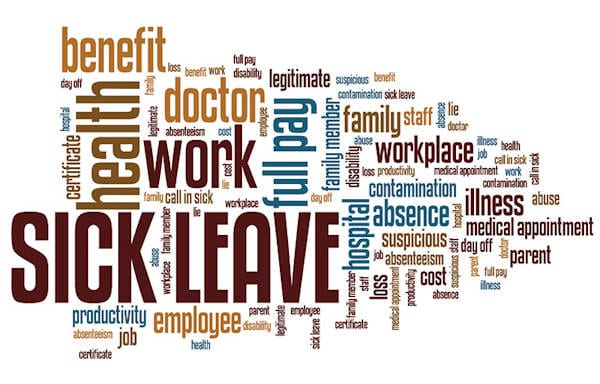Effective April 2, 2020, the Federal Government authorized paid sick leave in certain circumstances. It is anticipated that the Department of Labor will be issuing regulations which will give further clarity to what the law requires and Congress is considering additional relief packages which may supplement this new law. Below is a summary of what the law requires as of March 20, 2020.
Effective: The law becomes effective on April 2, 2020 and expires on December 31, 2020.
Employee: Has the same definition as used in the FLSA section 3(e) – “any employee employed by an employer” and includes most federal, state and local government employees.
Employer: Covered employers include any person engaged in commerce or in any industry or activity affecting commerce that employs fewer than 500 employees or is a public agency that employs at least 1 employee.
Coverage: Employees are entitled to paid sick time if the employee is unable to work or telework because:
(1) The employee is subject to a Federal, State, or local quarantine or isolation order related to COVID–19.
(2) The employee has been advised by a health care provider to self-quarantine due to concerns related to COVID– 19.
(3) The employee is experiencing symptoms of COVID– 19 and seeking a medical diagnosis.
(4) The employee is caring for an individual who is subject to an order as described in subparagraph (1) or has been advised as described in paragraph (2).
(5) The employee is caring for a son or daughter of such employee if the school or place of care of the son or daughter has been closed, or the child care provider of such son or daughter is unavailable, due to COVID–19 precautions. or
(6) The employee is experiencing any other substantially similar condition specified by the Secretary of Health and Human Services in consultation with the Secretary of the Treasury and the Secretary of Labor.
Exclusions: “[A]n employer of an employee who is a health care provider or an emergency responder may elect to exclude such employee from the application of this subsection.” And the DOL may issue regulations excluding such workers.
Amount of Paid Leave: Full-time employees are entitled to 80 hours. Part-time employees are entitled to the average number of hours they work over two weeks. The time does not carry over from year to year. The paid leave is capped as follows: $511 per day and $5,110 in the aggregate for a use described in paragraph (1), (2), or (3) enumerated above; and $200 per day and $2,000 in the aggregate for a use described in paragraph (4), (5), or (6) enumerated above (which can be 2/3 regular pay); provided the employee receives at least the minimum wage as provided in the jurisdiction.
Employer Restrictions: Employers cannot require the employee find a replacement as a condition for paid leave. Employers cannot require an employee to exhaust other accrued paid leave before this paid leave.
Use of Paid Sick Leave: Paid leave for any of the reasons enumerated above is available immediately for an employee regardless of how long the employee has been employed by an employer.
Employee Notice: Employers may require the employee to follow reasonable notice procedures to continue receiving such paid sick time “after the first workday (or portion thereof) an employee receives paid sick time under this Act.”
Employer Notices: There will be a notice posting required once the Department of Labor develops it.
No Retaliation: It shall be unlawful for any employer to discharge, discipline, or in any other manner discriminate against any employee who uses this leave or complains about or testifies in a case regarding use of this leave.
Penalties: There are employer penalties for failing to comply and such penalties are in accordance with the FLSA.
Multiemployer Collective Bargaining Agreements: Employers who are signatories to a multiemployer collective bargaining agreement may “consistent with its bargaining obligations and its collective bargaining agreement, fulfill its obligations [to pay employees under the new law] by making contributions to a multiemployer fund, plan, or program based on the paid leave each of its employees is entitled to under such section while working under the multiemployer collective bargaining agreement, provided that the fund, plan, or program enables employees to secure pay from such fund, plan, or program based on hours they have worked under the multiemployer collective bargaining agreement for paid leave taken under” the new law.
